Egypt, a land of ancient wonders and mysteries, has always fascinated travelers with its rich history and awe-inspiring monuments. Among these architectural marvels, the temples in Egypt hold a special place.
These sacred structures, dedicated to various deities, not only showcase the incredible craftsmanship of ancient Egyptians but also offer a glimpse into their spiritual beliefs and rituals.
If you’re unsure of which temples you should visit, we got you this guide on temples in Egypt you must visit to immerse yourself in the timeless beauty and profound cultural heritage of this extraordinary land.
Karnak Temple

As we embark on our journey through the temples in Egypt, we begin with the grandeur of the Karnak Temple. Located near Luxor, Karnak Temple is the largest religious complex ever built by man. Its construction spanned over several dynasties, resulting in a remarkable blend of architectural styles and symbolism.
This colossal temple complex was dedicated to the worship of Amun-Ra, the chief deity of the Egyptian pantheon. With its massive hypostyle hall, towering obelisks, and imposing pylons, Karnak Temple truly captures the essence of ancient Egyptian architecture.
Luxor Temple

Our next stop takes us to the captivating Luxor Temple. Located on the east bank of the Nile, Luxor Temple is a testament to the grandeur and religious significance of Thebes, the ancient capital of Egypt.
This temple complex was dedicated to the rejuvenation of kingship and served as the backdrop for the Opet Festival, an annual celebration honoring the divine union of Amun-Ra and the pharaoh. The colossal statues of Ramses II, the elegant colonnade of Amenhotep III, and the iconic pylon entrance make Luxor Temple a must-visit destination for history enthusiasts and spiritual seekers alike.
Temple of Hatshepsut

Amidst the rugged cliffs of Deir el-Bahari, the Temple of Hatshepsut stands as a magnificent tribute to the reign of one of Egypt’s most renowned female pharaohs. This temple, dedicated to the sun god Amun-Ra, showcases a unique architectural style characterized by terraces, colonnades, and vibrant reliefs. The mortuary temple, designed to immortalize the legacy of Hatshepsut, reflects her devotion to the gods and her ambition to be remembered as one of Egypt’s greatest rulers. As you explore this marvel, you’ll be captivated by the stories carved on the walls, narrating the exploits of this remarkable pharaoh.
Abu Simbel Temples
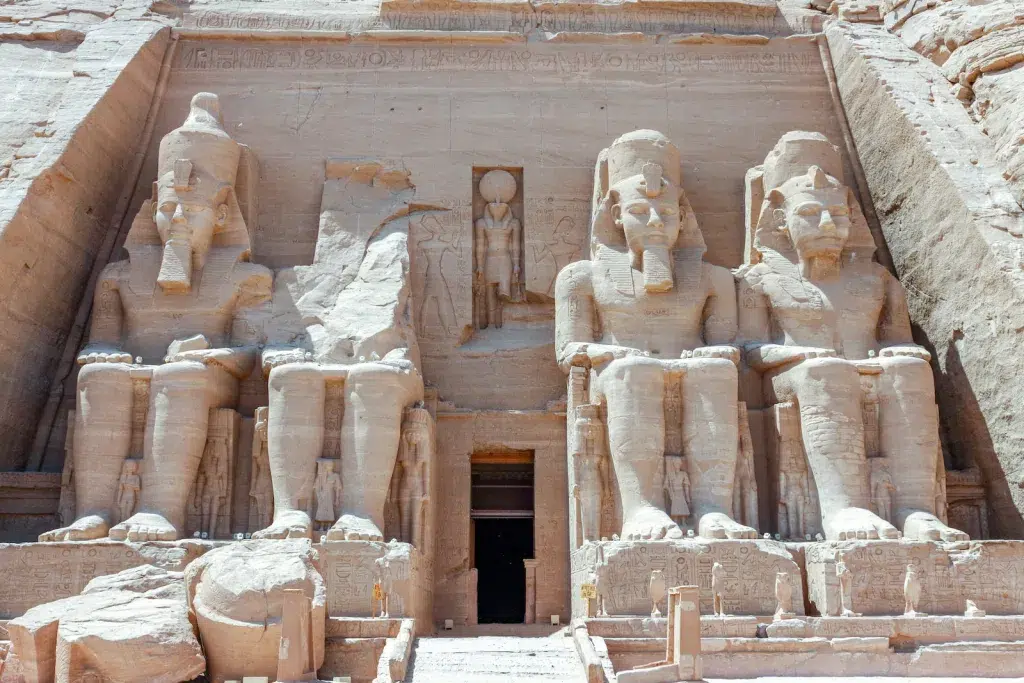
Among the temples in Egypt, none exemplify ancient engineering prowess quite like the Abu Simbel Temples, located in Aswan. Built by Ramses II in the 13th century BCE, these temples were hewn out of a mountainside near the Sudanese border.
The Great Temple of Abu Simbel, dedicated to Ramses II himself, features colossal statues guarding the entrance, while the Small Temple honors his beloved wife, Queen Nefertari. The alignment of the temples is a testament to the precision and astronomical knowledge of the ancient Egyptians. Don’t miss the mesmerizing experience of witnessing the biannual solar alignment, known as the Sun Festival, when the inner sanctum of the temple is illuminated by the sun’s rays.
Philae Temple

Nestled on the picturesque island of Philae, near Aswan, the Philae Temple enchants visitors with its serene beauty and intriguing history. Dedicated to the goddess Isis, Philae Temple is a masterpiece of ancient Egyptian architecture and a testament to the resilience of human endeavor.
Rescued from the rising waters of the Nile and relocated to Agilkia Island, the temple is adorned with stunning reliefs and hieroglyphs that depict the mythological stories of Isis and Osiris. The tranquil ambiance of Philae Temple, combined with its picturesque setting, offers a truly magical experience for those who venture to this hidden gem.
Kom Ombo Temple

Located in Aswan, the Kom Ombo Temple is a unique marvel that honors two distinct gods – Sobek, the crocodile god, and Horus, the falcon-headed god. This symmetrical temple is divided into two identical sections, each dedicated to one of the deities. Intricate reliefs and inscriptions narrate tales of ancient rituals, medical practices, and the rivalry between Sobek and Horus. As you explore Kom Ombo Temple, you’ll witness the remnants of a fascinating civilization that revered both nature and divinity.
The Temple of Horus, Edfu
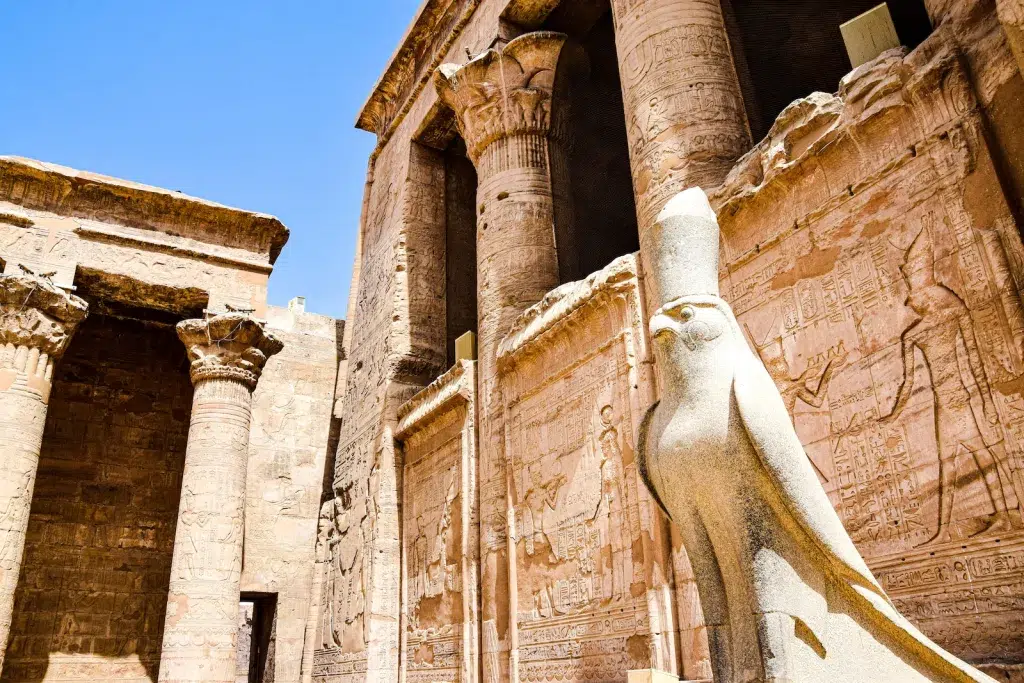
Dedicated to the falcon god Horus, The Temple of Horus stands as one of the best-preserved temples in Egypt. Its towering pylons, massive courtyard, and elaborate reliefs transport visitors back in time to the age of the pharaohs.
The Temple of Horus played a crucial role in the annual Festival of Horus, a grand celebration that involved sacred processions, rituals, and reenactments of mythical battles. As you explore this magnificent temple, you’ll be awestruck by the intricate details that bring the ancient legends to life.
Temple of Seti I
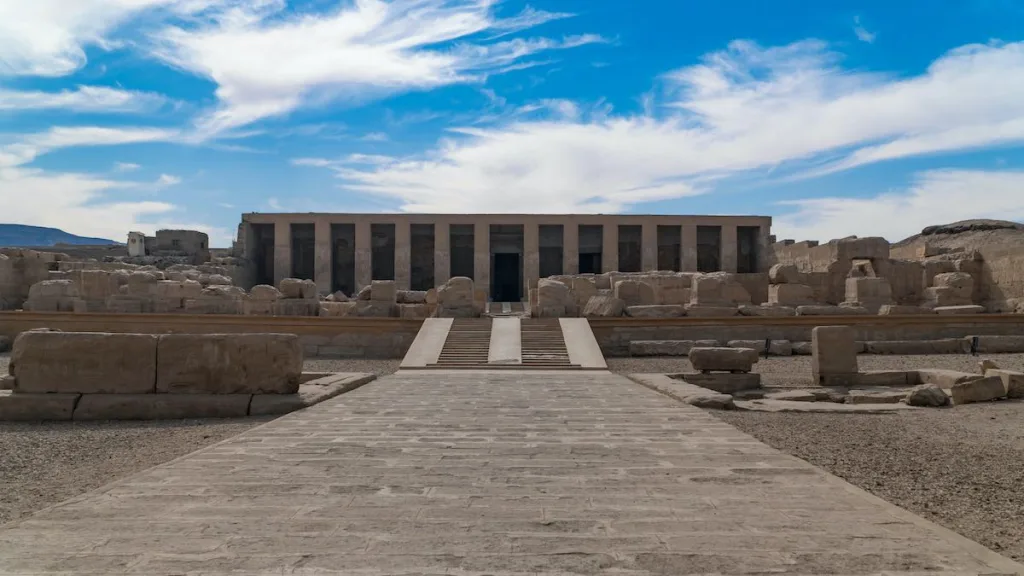
One of the lesser-known but equally impressive temples in Egypt is the Temple of Seti I in Abydos, Egypt. This hidden gem boasts a remarkable hypostyle hall, adorned with an impressive array of columns intricately decorated with intricate reliefs and hieroglyphs.
The Hypostyle Hall of the Temple of Seti I is often referred to as the “Great Temple of Abydos” and is a testament to the exceptional craftsmanship of ancient Egyptian artisans. Each column tells a story, depicting scenes from mythology, rituals, and the deification of pharaohs. A visit to this awe-inspiring hall is a journey into the artistic and spiritual heritage of ancient Egypt
Dendera Temple Complex

The Dendera Temple Complex, located north of Luxor, specifically in Qena, Egypt, offers a captivating glimpse into the religious beliefs and astronomical knowledge of ancient Egyptians. Dedicated to the goddess Hathor, the temple complex features the grand Temple of Hathor, adorned with intricate carvings and beautifully preserved ceilings depicting constellations and zodiac signs.
The renowned Dendera Zodiac, a fascinating astrological relief, has intrigued scholars for centuries. Exploring the Dendera Temple Complex allows you to connect with the celestial world and unravel the mysteries of ancient Egyptian cosmology.
The Temple of Khnum at Esna

Tucked away in the city of Esna, the Esna Temple awaits discovery by intrepid travelers. This modest yet remarkable temple dedicated to the ram-headed god Khnum offers a unique glimpse into the daily life and religious practices of ancient Egyptians. The intricately carved reliefs depict scenes of offerings, rituals, and the divine birth of the pharaoh. As you step into Esna Temple, you’ll be transported to a bygone era, where the spiritual and the earthly intertwined in the hearts of the people.
Mortuary Temple of Ramesses III

Located on the west bank of Luxor, Egypt, the Mortuary Temple of Ramses III at Medinet Habu is a monumental tribute to the pharaoh and a testament to his military victories. The sprawling temple complex features massive pylons, stunning reliefs, and beautifully preserved chapels. As you explore the vast halls and courtyards, you’ll witness the grandeur of ancient Egyptian architecture and gain insight into the pharaoh’s divine role as a ruler and protector of Egypt.
-
Are the temples in Egypt open to the public?
Yes, most of the temples in Egypt are open to the public. However, it’s always a good idea to check the opening hours and any specific regulations before your visit.
-
Can I take photographs inside the temples?
In general, photography is allowed inside the temples, but with NO FLASH PHOTOGRAPHY. Some sites may have restrictions or additional fees for photography. It’s best to check the guidelines at each temple to ensure compliance.
-
How should I dress when visiting the temples in Egypt?
It is recommended to dress modestly when visiting Egypt in general. Note that the weather can be exceptionally hot during the summer, so wear accordingly. We also recommend avoiding skirts and dresses, and wear something practical. As for the most important tip, wear comfortable shoes.
-
Are there guided tours available for the temples?
Yes, guided tours are available for many of the temples in Egypt. Joining a guided tour can enhance your experience by providing historical context and insights into the significance of each temple. You can book a guide online from many travel agencies, or you can hire someone there on the spot, noting that these guides will probably overcharge you and it’s important to agree on the payment first and refuse any additional fees if asked after the tour.
-
Are there any entrance fees for the temples?
Yes, there are entrance fees for most temples in Egypt. The fees may vary depending on the location and the specific temple you wish to visit. It’s advisable to check the fees in advance to plan your budget accordingly.
-
Can I visit all the temples in one trip?
Short answer, no. It would be impossible to visit all the temples in Egypt in a single trip due to their geographical distribution and the time required to explore each site thoroughly. It’s best to prioritize the temples that interest you the most and plan your itinerary accordingly.
-
How can I visit the temples in Egypt?
To visit the temples in Egypt, you can plan your trip independently or join a guided tour. Independent travel allows you to have more flexibility in your itinerary, while guided tours provide expert knowledge and convenience. Ensure to check the opening hours, entrance fees, and any specific regulations for each temple you plan to visit.
-
What is the best time to visit the temples in Egypt?
The best time to visit the temples in Egypt is during the cooler months, from November to March, when the weather is more pleasant for exploring outdoor sites. Avoiding the scorching heat of summer is advisable, as it can be overwhelming, especially in desert areas. Consider the climate and plan your visit accordingly.
-
Can I explore the temples on my own?
Yes, you can explore the temples on your own. Many temples have information boards and signs that provide historical context and guide visitors through the site. However, hiring a knowledgeable guide or joining a guided tour can greatly enhance your experience by providing deeper insights into the history, mythology, and symbolism associated with each temple.
-
Are there any precautions I should take while visiting the temples in Egypt?
While visiting the temples in Egypt, it is essential to take certain precautions to ensure your safety and enjoyment:
Stay hydrated: Carry water with you, especially during the hot months, to stay hydrated and prevent dehydration.
Protect yourself from the sun: Apply sunscreen, wear a hat, and use sunglasses to protect yourself from the strong sun.
Wear comfortable shoes: The temple complexes can be expansive, so wearing comfortable shoes is advisable for exploring the sites.
Respect the rules and regulations: Adhere to the guidelines and regulations set by the temple authorities to ensure the preservation of these historical sites.
Secure your belongings: Keep your belongings safe and secure to prevent any loss or theft during your visit. -
Can I enter the inner sanctums of the temples?
In most cases, the inner sanctums of the temples are not open to the general public. These areas are considered sacred and are often off-limits. However, you can still explore the outer areas of the temples, admire the architecture, and marvel at the intricate carvings and reliefs.
-
Are there audio guides available at the temples?
Audio guides are available at some temples in Egypt, providing visitors with informative commentary and historical insights as they explore the site. These guides are often available for rent or included in the ticket price. Check with the temple authorities or tour operators for the availability of audio guides at the specific temples you plan to visit.
-
Are there any hotels or accommodations near the temples?
There are several hotels and accommodations available near the temples in Egypt, particularly in tourist-friendly areas like Luxor, Aswan, and nearby cities. From luxury resorts to budget-friendly options, you can find a range of accommodations to suit your preferences and budget. It is advisable to book in advance, especially during peak tourist seasons, to ensure availability.
-
Can I visit the temples as part of a Nile River cruise?
Yes, visiting the temples as part of a Nile River cruise is a popular option for travelers. Nile cruises offer a convenient and scenic way to explore Egypt’s ancient sites while enjoying the comfort and amenities of a cruise ship. These cruises typically include stops at major temple sites along the Nile, allowing you to visit multiple temples during your journey.
-
Are there any night-time sound and light shows at the temples?
Yes, some temples in Egypt offer captivating sound and light shows in the evenings. These shows use multimedia presentations to narrate the history and legends associated with the temples, creating a magical atmosphere. The light shows are often accompanied by music and provide a unique perspective on the temples’ ancient splendor. Check the schedules and availability of these shows at the specific temples you plan to visit.
-
How much time should I allocate for visiting each temple?
The time required to visit each temple varies depending on its size, significance, and your level of interest. Some temples, like Karnak Temple and Luxor Temple, can take several hours to explore thoroughly. Others, such as the smaller temples, may require an hour or two. It is recommended to allocate at least half a day for each major temple to fully appreciate its architectural beauty and historical context.
-
Are there souvenir shops near the temples?
Yes, there are often souvenir shops near the temples where you can find a wide range of Egyptian-themed souvenirs, including miniature statues, papyrus artwork, jewelry, and more. These shops offer an opportunity to take home a piece of Egypt’s ancient heritage as a memento of your visit. Remember to bargain and compare prices before making a purchase.
-
Are there any age restrictions for visiting the temples?
There are no specific age restrictions for visiting the temples in Egypt. However, it’s important to consider the nature of the sites and the amount of walking and exploring involved. Some temples may have uneven terrain or steep steps, which can be challenging for young children or individuals with mobility issues. It is advisable to assess the suitability of the temples based on the capabilities and interests of your group.
-
Can I visit the temples if I have limited mobility or use a wheelchair?
While accessibility may vary from one temple to another, many temples in Egypt have made efforts to improve accessibility for visitors with limited mobility or those using wheelchairs. Some temples provide ramps or alternative routes to accommodate wheelchair users, while others may have limited accessibility due to their historical nature. It is recommended to inquire about accessibility options at the specific temples you plan to visit.
-
Are there any special restrictions for visiting the Abu Simbel Temples?
Yes, there are some special considerations when visiting the Abu Simbel Temples due to their remote location and unique significance. The temples are located near the Sudanese border and can be reached by a short flight or a long drive from Aswan. Visitors should note that there are specific regulations regarding photography and preservation at Abu Simbel. Flash photography is not allowed inside the temples, and visitors are requested to be mindful of the delicate environment. Additionally, witnessing the biannual solar alignment during the Sun Festival requires careful planning, as the alignment occurs on specific dates (February 22 and October 22) when the sun’s rays illuminate the inner sanctuary of the Great Temple. It is advisable to consult with local tour operators or guides for the best way to experience Abu Simbel’s unique offerings.
-
Are there any night visits or special events at the temples?
Some temples in Egypt offer special night visits or events that provide a different perspective and ambiance compared to daytime visits. For example, the Luxor Temple hosts a stunning sound and light show that narrates the history of ancient Egypt through a captivating audiovisual experience. Additionally, during certain times of the year, specific temples may hold unique events, performances, or festivals. These events allow visitors to witness traditional rituals and cultural celebrations. It is advisable to check with local tour operators, temple authorities, or tourist information centers for the availability and schedule of such night visits or special events.
-
Can I meditate or practice yoga at the temples?
Short answer, please don’t. Long answer; while the temples in Egypt hold great spiritual and historical significance, they are primarily cultural and historical sites rather than dedicated meditation or yoga centers. It is essential to respect the sanctity of these places and adhere to the regulations set by the temple authorities. Quiet contemplation and appreciation of the architectural beauty and historical context are suitable activities at the temples. However, if you are interested in meditation or yoga, there may be specific retreat centers or facilities available in Egypt that cater to such practices.
Embarking on a journey to the temples in Egypt is an opportunity to immerse yourself in the mystical and awe-inspiring world of ancient Egyptian civilization. From the grand temples of Karnak and Luxor to the hidden gems of Abydos and Edfu, each temple tells a story of devotion, mythology, and architectural brilliance.
Whether you are a history enthusiast, an architecture lover, or a spiritual seeker, the temples in Egypt offer an unforgettable experience that will transport you back in time. So, pack your bags, set foot on the land of the pharaohs, and discover the temples that have captivated the world for centuries.



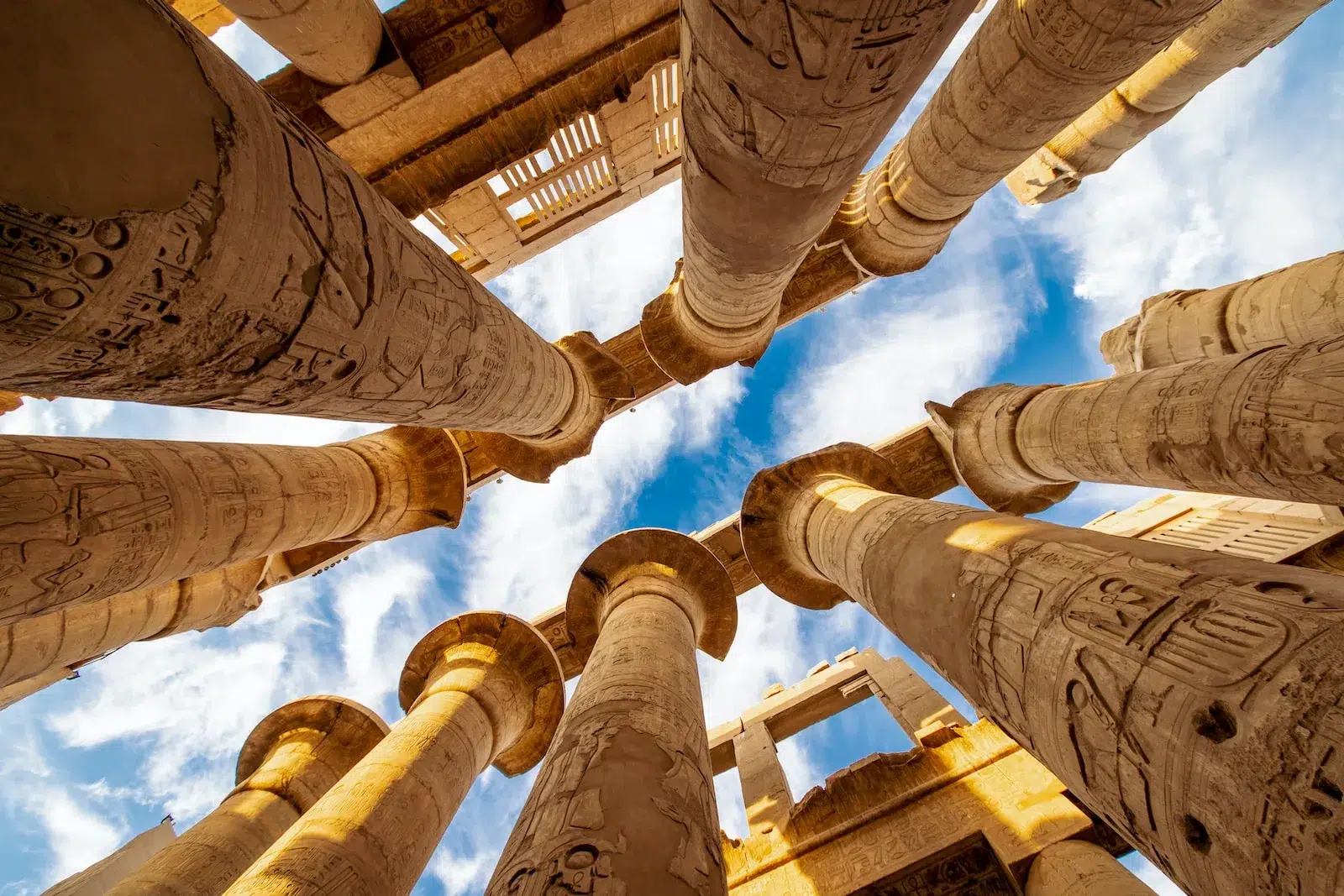





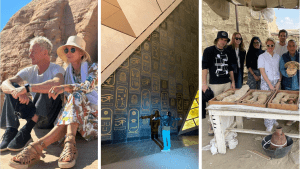
What do you think?
It is nice to know your opinion. Leave a comment.